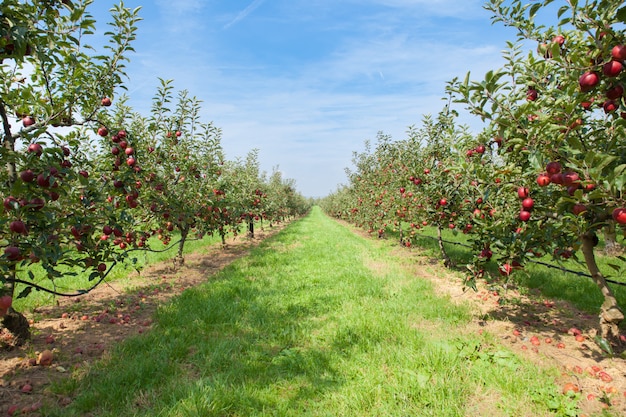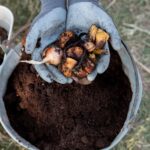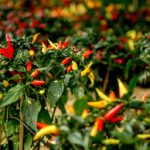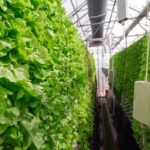Fruit orchards are a valuable investment for South African farmers, providing high-demand produce for local and international markets. However, improper management can lead to reduced yields, poor fruit quality, and financial losses. Identifying and avoiding common mistakes is crucial for running a productive and profitable orchard. Here are ten common mistakes in fruit orchard management and practical ways to address them.
1. Poor Orchard Planning
Farmers often plant trees without considering the region’s climate, soil type, or water availability. Planting incompatible fruit varieties can result in poor growth and low yields. To avoid this, research the best fruit types suited to your area. For example, citrus fruits thrive in South Africa’s warmer regions, while apples and pears perform well in cooler areas. A detailed orchard plan that factors in climate, topography, and market demand is essential.
2. Ignoring Soil Preparation and Testing
Planting trees in untested or unprepared soil leads to nutrient deficiencies and stunted growth. Farmers should perform soil tests before planting to determine nutrient levels and pH. Adjust the soil by adding lime to raise pH or sulfur to lower it and incorporate organic matter like compost to boost fertility. Proper soil preparation provides a strong foundation for healthy tree growth.
3. Incorrect Tree Spacing
Planting trees too close together causes overcrowding, limiting airflow and sunlight penetration. This can lead to diseases and reduced fruit production. On the other hand, planting trees too far apart wastes space and reduces orchard efficiency. Follow recommended spacing guidelines for your specific fruit trees to ensure healthy growth and maximize yields.
4. Neglecting Irrigation Management
Inconsistent or excessive watering is a common issue in orchards. Overwatering leads to root rot, while underwatering stresses trees and reduces fruit quality. Adopt efficient irrigation systems like drip irrigation, which delivers water directly to the roots. Monitor soil moisture levels regularly and adjust watering based on weather conditions and tree needs.
5. Skipping Regular Pruning
Failure to prune fruit trees results in dense canopies that restrict sunlight, hinder air circulation, and promote diseases. Regular pruning removes dead or diseased branches, shapes the tree for optimal growth, and encourages fruit production. Prune during the dormant season to reduce stress on the trees and ensure better fruit development.
6. Inadequate Pest and Disease Control
Ignoring early signs of pests and diseases can lead to significant losses. Common threats in South African orchards include fruit flies, scale insects, and fungal diseases like powdery mildew. Implement integrated pest management (IPM) practices such as monitoring for infestations, introducing natural predators, and using pesticides only when necessary. Regular orchard inspections are critical to catch problems early.
7. Overlooking Pollination Needs
Poor pollination reduces fruit set and overall yield. Many fruit trees, like apples and pears, require cross-pollination to produce fruit. Ensure you plant compatible varieties and introduce pollinators like honeybees to your orchard. Providing a diverse environment with flowering plants can also attract natural pollinators.
8. Improper Fertilization Practices
Under-fertilizing deprives trees of essential nutrients, while over-fertilizing can harm roots and contaminate water sources. Base your fertilization plan on soil and leaf tests to determine the right nutrients and quantities. Use a balanced fertilizer with nitrogen, phosphorus, and potassium, and apply it during critical growth stages for optimal results.
9. Harvesting at the Wrong Time
Harvesting fruit too early or too late reduces its market value and shelf life. Immature fruit lacks flavor and appeal, while overripe fruit is prone to spoilage. Learn the ideal harvesting indicators for your fruit, such as color changes, firmness, or sugar levels. Use tools like refractometers to measure sugar content and determine the best time to harvest.
10. Lack of Post-Harvest Handling
Improper handling of fruit after harvest leads to bruising, spoilage, and loss of quality. Farmers often neglect cooling, sorting, and packaging steps, which are vital for maintaining freshness. Invest in proper storage facilities such as cold rooms to preserve fruit quality. Handle fruit carefully during transport and use suitable packaging to prevent damage.
Tips for Successful Orchard Management
Plan your orchard layout to optimize space, sunlight, and airflow. Train workers on pruning, pest control, and harvesting techniques to improve efficiency. Monitor weather conditions closely and prepare for challenges like drought or frost. Join farming cooperatives or associations to access resources, training, and market opportunities.
Proper orchard management requires attention to detail and adherence to best practices. By avoiding these common mistakes, South African farmers can enhance productivity, maintain fruit quality, and achieve greater financial returns. Whether you manage a small family orchard or a large commercial operation, adopting sustainable and informed practices is the key to long-term success.
Join 'Farmers Mag' WhatsApp Channel
Get the latest Farming news and tips delivered straight to your WhatsApp
CLICK HERE TO JOIN






